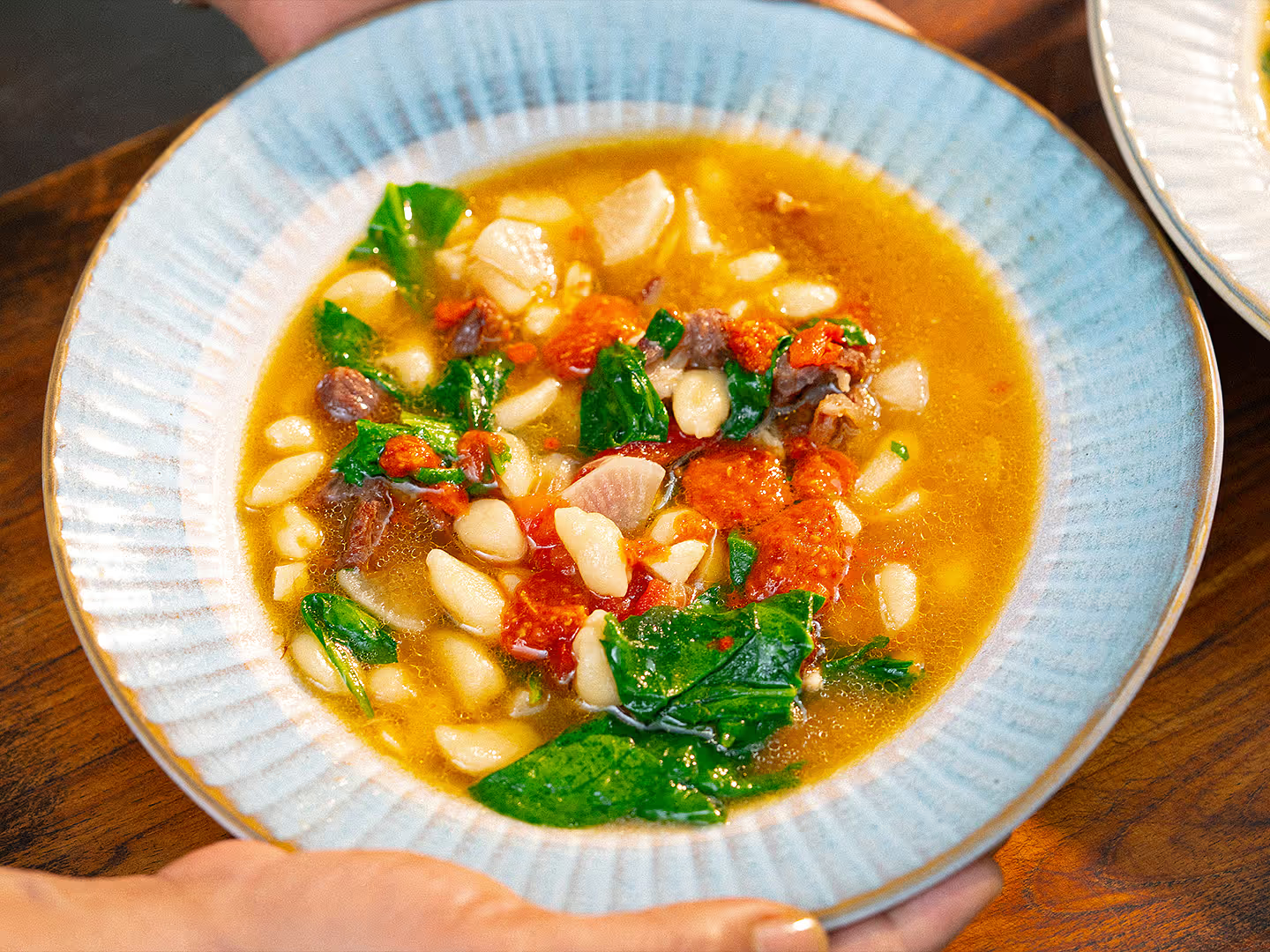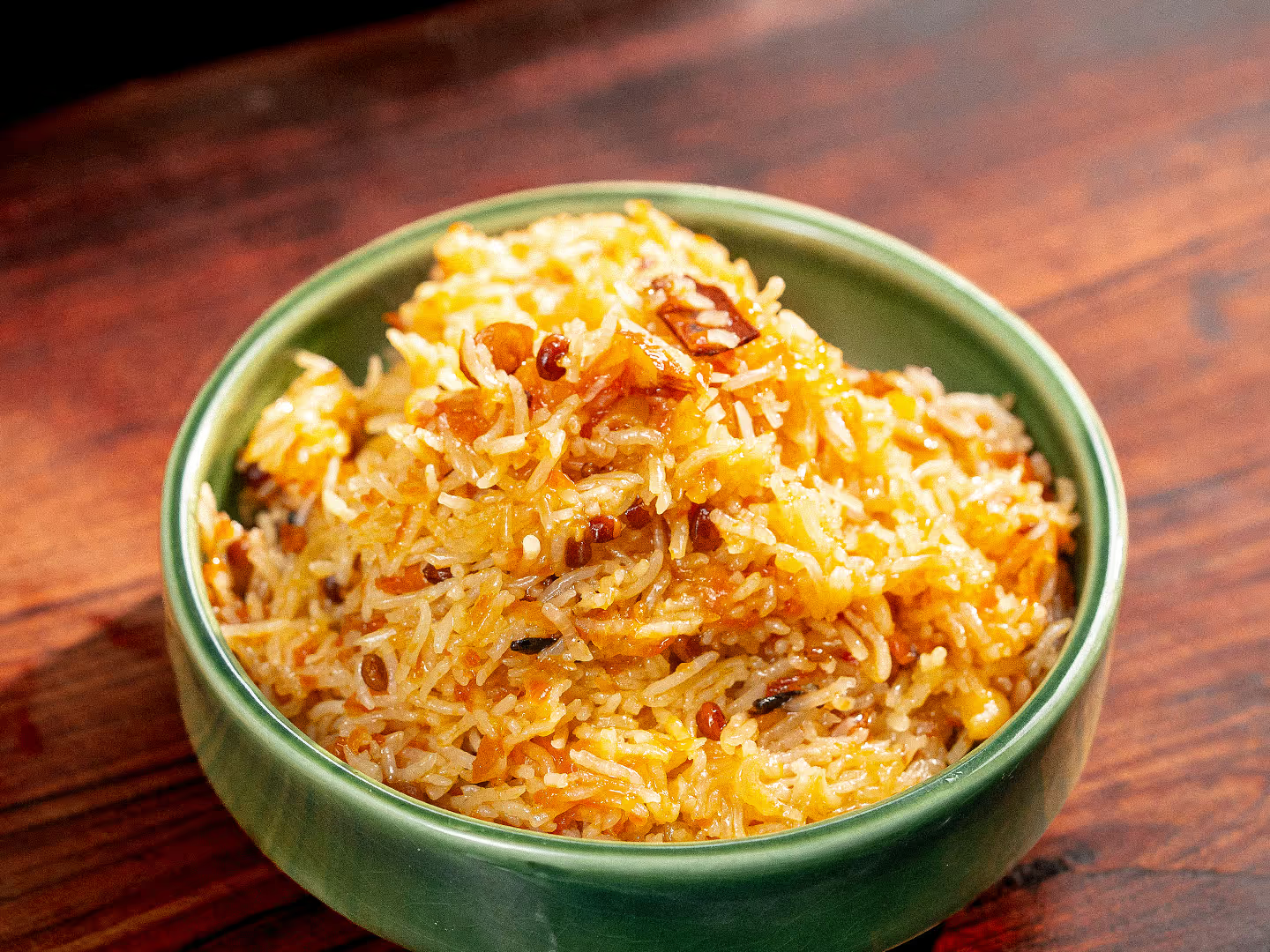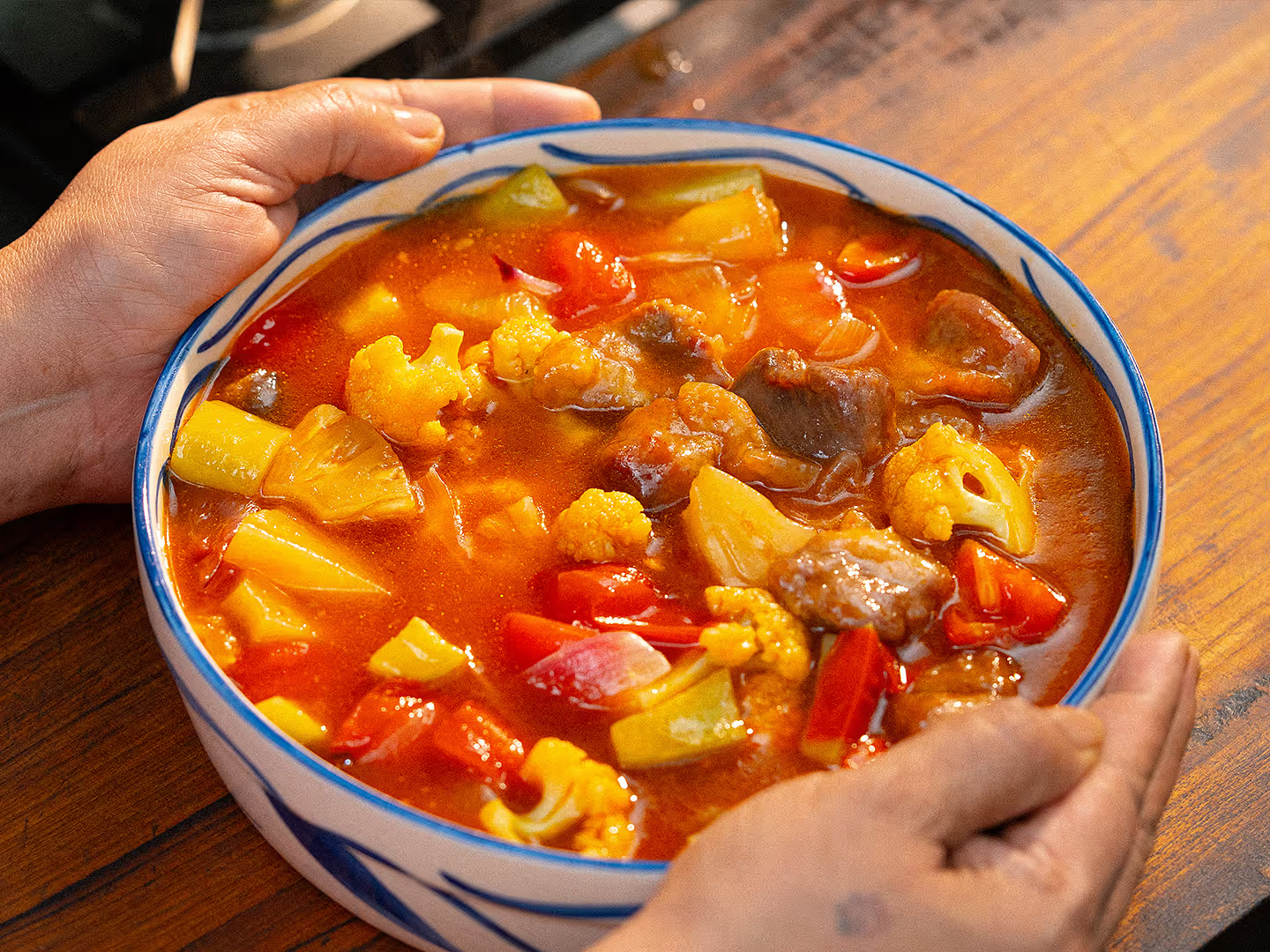Kumro Dogar Pachmishali
Pumpkin vine cooked with a medley of vegetables
- Cooking time90 mins
- Calories223kcal
The sweet red pumpkin finds its way into Bengali meals in every imaginable form. Pumpkin flowers are, of course, a well known delicacy. Naturally, the pumpkin vine is much loved too. Its stalks are hollow, meaning they can hold flavourful liquids like a penne. The leaves are substantial, with a chewy texture when cooked, unlike spinach, pui (Malabar spinach), or other softer leaves, which lose their crunch completely once cooked.
This recipe with kumror doga (pumpkin vine) is a beloved family recipe passed on from my great-grandmother. It follows the standard panchmishali torkari format—no spices apart from the initial tempering with nigella—no onion, garlic, or even ginger. A bunch of vegetables just stew gently in their own juices until the whole thing comes together, slightly mushy but all vegetables still holding their shape and flavour.
What is a bit special here is the addition of coarsely ground lentils—masur dal in this case—that adds flavour and texture. That something with no spices or aromatics apart could taste this complex and layered is the true genius of Bengali cooking.
🌾 We've served kumro'r doga'r pachmishali today with the mildly fragrant Kataribhog rice from Amar Khamar.
Frequently Asked Questions
Books in this recipe
Ingredients
- 120 g potato (4-cm cube)
- 135 g sweet potato (4-cm cube)
- 185 g pumpkin (4-cm cube)
- 125 g jhinge (ridged gourd; 5-cm segments)
- 180 g brinjal (5-cm segments)
- 125 g kumro'r daata (pumpkin stems; 5-cm long)
- 100 g kumror's pata (pumpkin leaves, roughly torn)
- 35 g mosur dal (soaked 1 hour)
- 5 pcs green chillies
- 85 g mustard oil
- 2 dried red chillies
- 2 bay leaves
- ½ tsp kaalo jeere (nigella seeds)
- 10 g salt
- 18 g sugar
- 2 g turmeric
Method
- Soak mosur dal in water. Set aside; we'll come back to it later.
- Wash the pumpkin vine thoroughly under running water and allow the excess water to drain. Now separate the leaves, stack a few together at a time, and tear them up roughly into smaller pieces. Clip off the tendrils and other smaller offshoots from the pumpkin stalk so that you are left with sections of the thicker stem. Destring the stem to remove the outer fibrous layer. Once all the stems have been destrung, bunch them together and chop into 4-cm long segments.
- Finish chopping the remaining vegetables: peel and cut the potatoes, sweet potato, pumpkin, brinjal and jhinge into 3-cm chunks.
- Add the soaked mosur dal to a grinder jar with 2 green chillies. Grind in short pulses so that you have a coarse mixture. Don't make it too smooth or you'll lose texture.
- Heat 15 g mustard oil in a kadai to start with. Fry the brinjal until golden with about ¼ tsp of salt, and set aside.
- Now add the remaining 70 g mustard oil to the pan. Temper with dried red chillies, bay leaves and kaalo jeere.
- Add the potatoes, sweet potato and pumpkin, and fry on low heat with the lid on for 2 mins.
- Add the kumro'r daata (stems) and continue frying for 2 more mins.
- Add the mosur dal paste along with salt and turmeric. Fry on low heat with the lid on for 2 mins.
- Next, add jhinge along with the sugar and fry for another minute before adding in the kumro'r pata (leaves).
- Continue cooking on low heat for about 15 mins.
- Add in the fried brinjal and 3 slit green chillies. Keep cooking until all the vegetables are done.
- We've served kumro'r doga'r pachmishali with plain mosur dal and fragrant Kataribhog rice.































